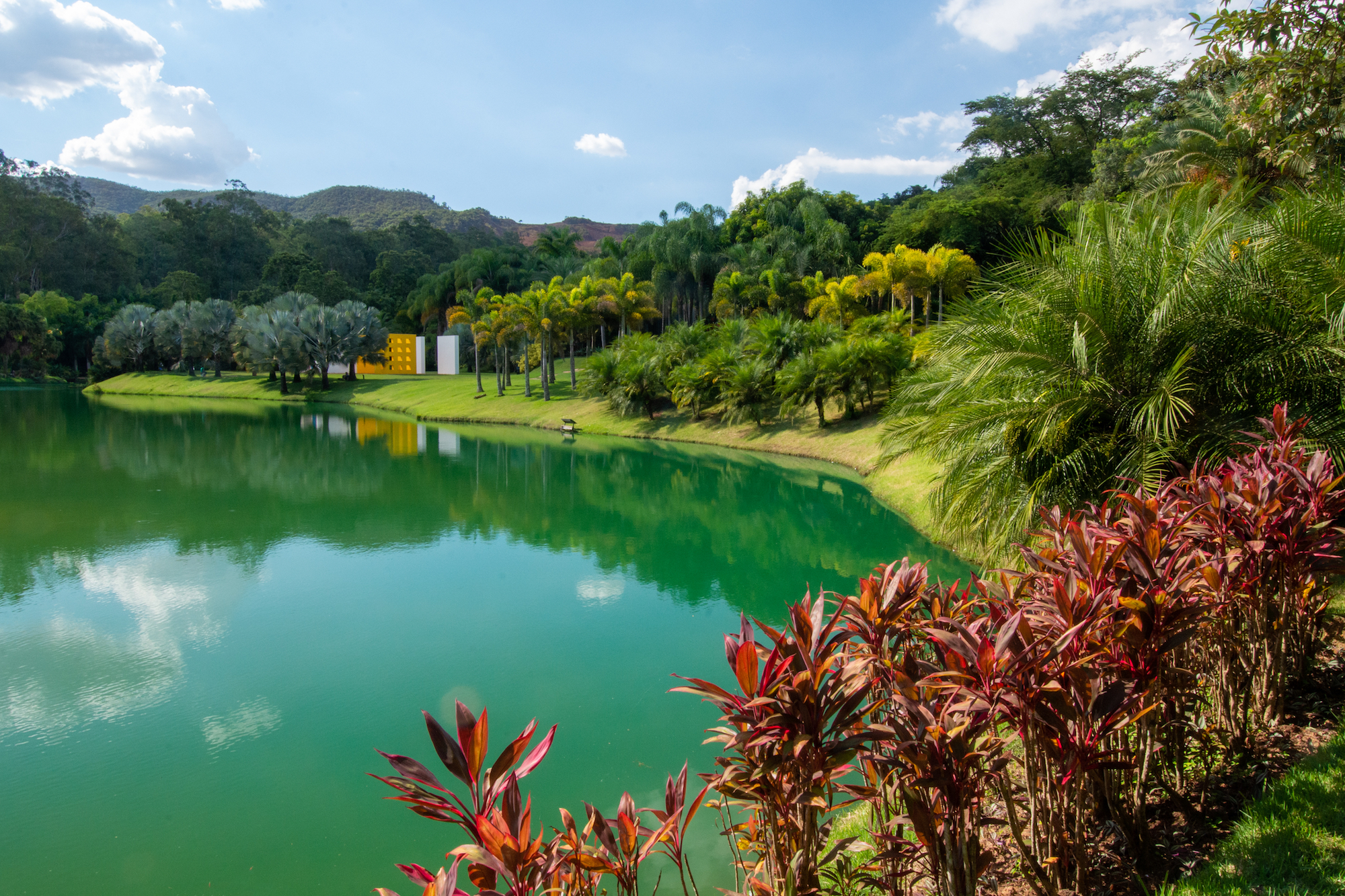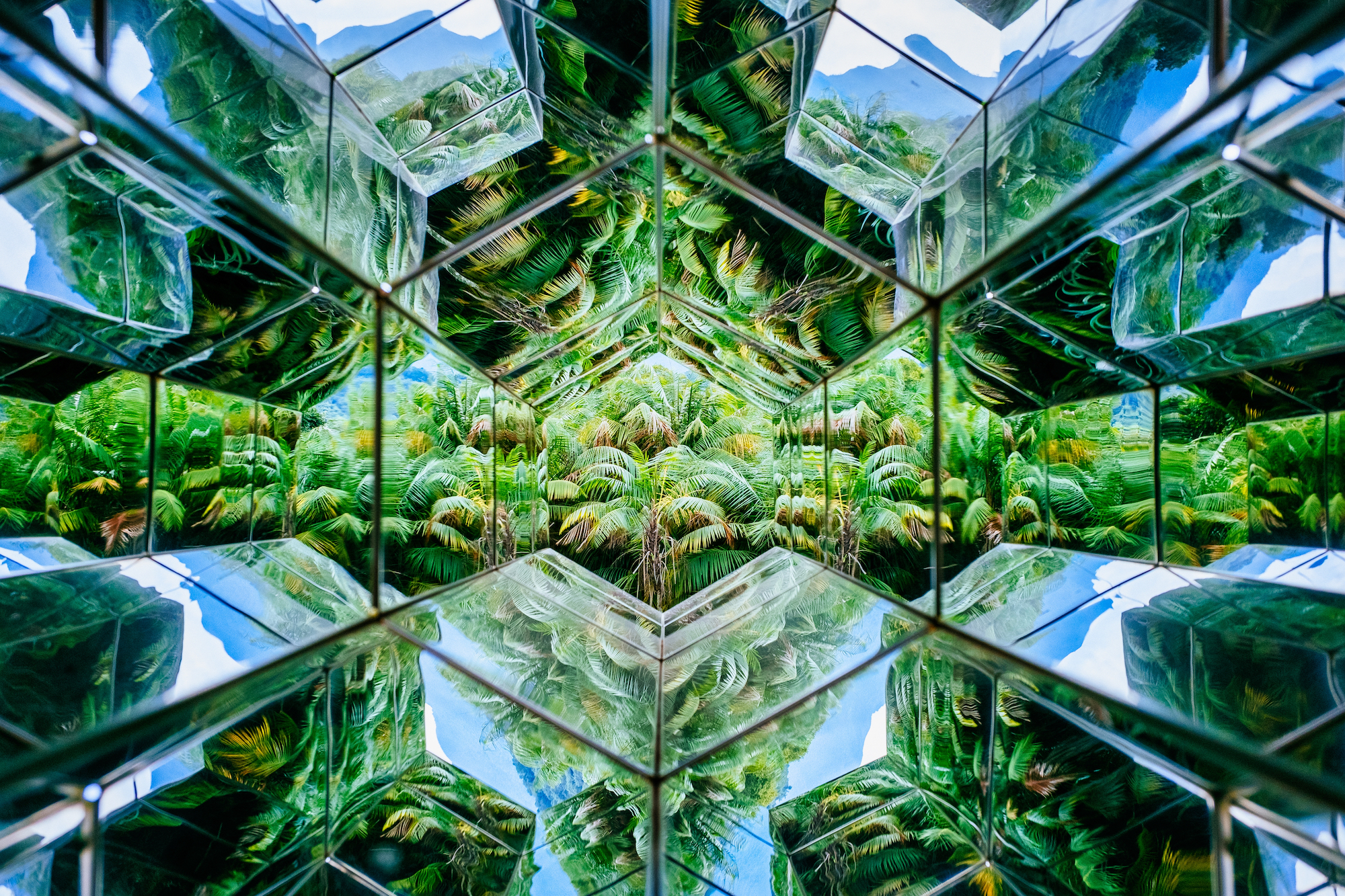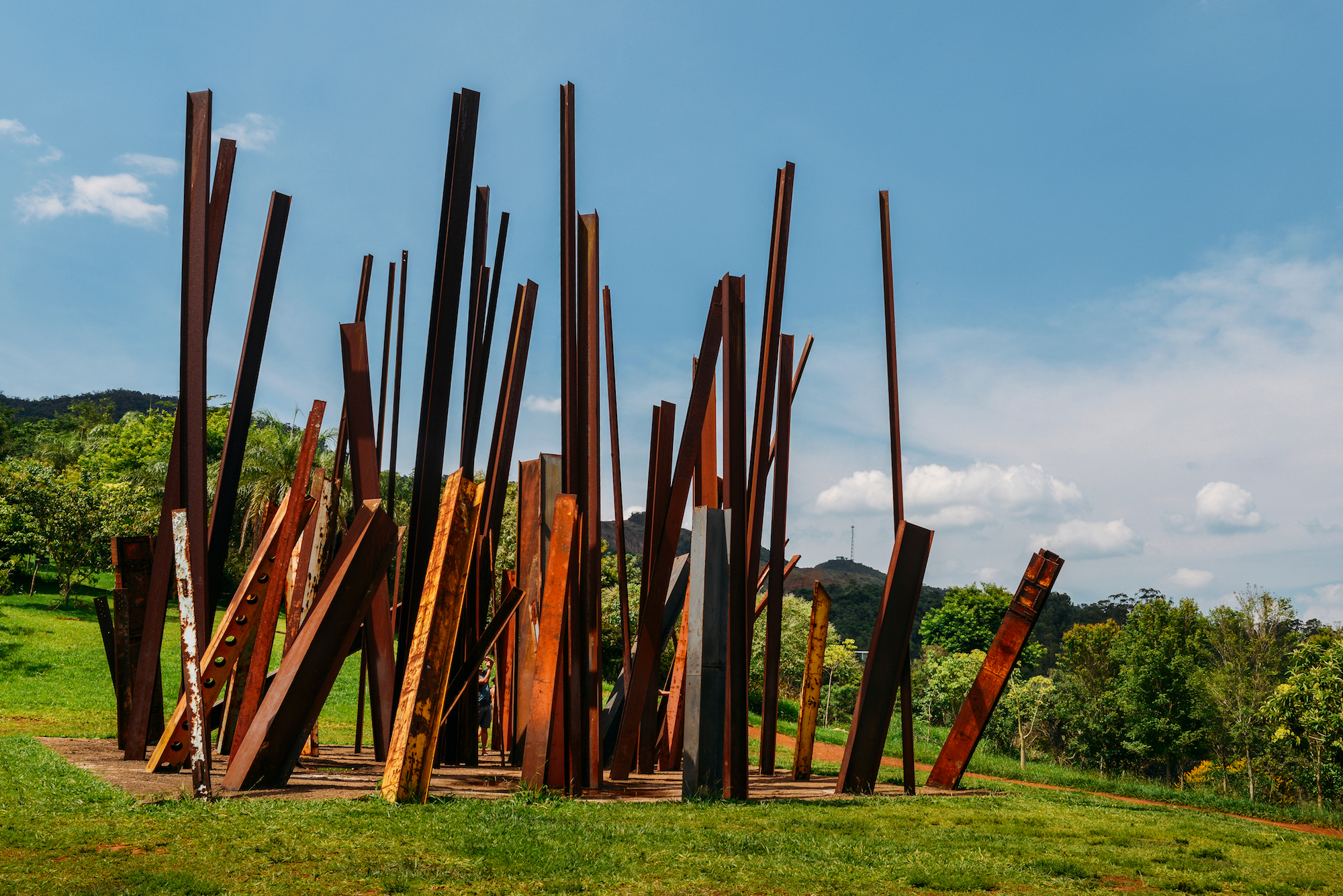
Lakeside view. Credit Cacio Murilo & Shutterstock
What
There are sculpture parks, and then there’s Inhotim. An Edenic domain in southeastern Brazil, Inhotim situates a cornucopia of art within 140 hectares of lush botanical gardens. Based around the collection of the mining magnate Bernardo Paz, it contains hundreds of artworks, both in galleries and nested in the landscape. Its most notable feature is its pavilions, 18 architectural follies each devoted to a single artist. Inhotim is where practitioners go big.
Cristina Iglesias’s Vegetation Room (2010) is a labyrinth whose walls erupt in her characteristic sculptural plants, clad in mirrors so that it vanishes into the flora around it. Chris Burden’s Beam Drop (2008) comprises 72 steel beams dropped 45 metres into a pit of wet cement. And Doug Aitken’s Sonic Pavilion (2009) captures the reverberations from a 202-metre deep abyss beneath. Inhotim’s ambition is botanic as well as artistic: it is home to almost 5,000 plant species, including 1,400 different varieties of palm.

“Paz wanted to transform Inhotim into an idyllic vision of eco-friendly future life. It now seems unlikely this will come to pass”
Who
Crowned with cloud of snow-white hair, Paz is a canny businessman clad in the vestments of the visionary. He founded the park around his own farm (its name derives from a previous owner, an English engineer locals knew as Senhor Tim). Paz began buying up swathes of land in the 1980s in order to preserve the area’s natural beauty from developers. Inspired by the designs of his friend Roberto Burle Marx—a landscape designer with an enormous influence on Brazilian modernism—Paz gradually set about converting his ranch into a botanical garden. But it was the installation artist Tunga who convinced Paz to add art to the mix. Inhotim then opened in 2006 and in 2008 became a public institute, albeit one funded by Paz’s donations.
Paz has faced some tumultuous times of late. In 2017 he was accused of funnelling early donations to Inhotim into his business ventures; he subsequently left the institute’s board. He was found guilty the following year and sentenced to nine years in jail, only to be exonerated by a federal court this February. The scandal weighs heavily on Inhotim. Artist Delson Uchô described it as “a sweet fruit with bitter roots.” Paz once wanted to transform Inhotim into an idyllic vision of eco-friendly future life, replete with accommodation. It now seems unlikely this will come to pass.

Where
Inhotim lies outside the mining town of Brumadinho in the Brazilian state of Minas Gerais: a fertile, densely-populated region of mountains, caves and colonial era hill towns. State capital Belo Horizonte is home to the modernist icon Oscar Niemeyer’s lakeside Pampulha building complex. But Minas Gerais’ true riches are rural. The Atlantic Forest covers much of the region. Intohim sits on the western edge of the Serra do Rola-Moça, a rugged highland with blood red soil and abundant natural springs. And to the southeast, the Serra do Espinhaço mountains conceal Ouro Preto: a gem of Portuguese baroque architecture, built with slave labour during the original Gold Rush. One of Latin America’s best preserved colonial towns, it was once the most populous city on the continent, ten times larger than São Paulo.
“Dotted with lakes, groves, inclines and even a pool for swimmers, Paz’s kingdom is both consciously artificial and strangely primordial”

Why
Inhotim is little short of a botanical paradise, so stuffed with eye-popping colours that it resembles a Henri Rousseau painting. Dotted with lakes, groves, inclines and even a pool for swimmers, Paz’s kingdom is both consciously artificial and strangely primordial. Although Paz’s collection encompasses many international names, a healthy proportion of work here is by local practitioners, making it one of the best places to explore Brazil’s unique modern art. The late Hélio Oiticica is represented by Magic Square #5 ( (1977), a modernist Stonehenge of boldly-coloured walls, while many of Adriana Varejão’s major works live within a floating cube of concrete above a mirror-like pond. But the most breathtaking work of all might belong to Lygia Pape, whose roughly-hewn pavilion turns simple threads of fabric into an ever-changing array of gold.





